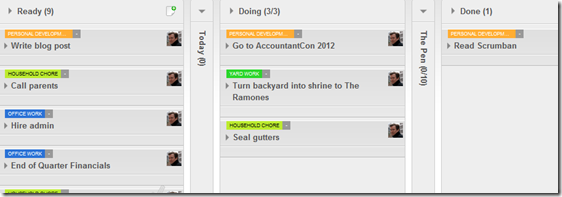I will not be accused of burying the lead here and say right up front:
Your Value Stream Is Wrong
And it always will be.This is a good thing, as we work from day to day the steps we take to complete work subtly or even violently change. When we move from home to work to a special project, there are subtle and important differences to how we do what we do.Today’s anti-pattern is is painful to watch. When people fall into a certain way of visualizing their work or a certain value stream, it becomes comfortable to them. So comfortable, in fact, that they are reluctant or downright resistant to change or improve it. They then flounder in increasing painful work because their value stream doesn’t match their actual needs.Let’s say for example that Mozart is the manager of a record store in Bavaria. He has three main types of work over a given month. One is order new stock from a variety of suppliers. The second is make sure the books are in order. The third is … everything else.Everything else is actually easy - even though it may be rather chaotic at times. We visual this type of work with a standard Personal Kanban value stream of READY | DOING | DONE. The work is going to be varied and extremely task-focused. Each of Mozart’s tasks is its own element of value. The best way to manage this work, to weigh these options, and to get these tasks completed is in a model that accepts the complexities and inherent chaos of day-to-day work.However, in other more project centered types of work, he may get more from value streams geared toward tracking of that specific work or project.For example, when ordering stock, the ideal world would tell you that orders are placed and received each month at set times. Mozart’s store has a mix of goods provide through suppliers ranging from large vendors to one person in their basement. Order responses are highly varied, leaving Mozart having to track not only the rate at which inventory is sold, but also the average response times for ordering popular items.So here we see Mozart’s order processing kanban. The value stream is quite specific to the value created. This is repeating value created in a fairly predictable way. If Mozart was only using the READY | DOING | DONE value stream for this type of project, he would have dozens of tasks polluting the rest of his work. The stages in these value streams may not actually be tasks. So, say he finds it’s time to order a new set of Buddha Machines - so he contacts the people in China via email. When he does that he can move the Buddha Machine ticket to ORDER. A few days later, they might send him a letter saying, “We received your order and will get to it soon.” Mozart can then move the ticket to CONFIRMED - even though he really didn’t do any task himself. The point here is that there is new useful information about the state of the Buddha Machine order. A few days later, he gets an e-mail saying that the Buddha Machines have shipped. Mozart again can move the ticket.From time to time, new tasks may appear in Mozart’s regular Personal Kanban that say things like “Order new AxMxAx album”. At that point, when Mozart does do the ordering, he will move that ticket to done, but also start a new ticket in the order processing kanban.So, here we see that Mozart’s work can have more than one value stream.Now, let’s say this works for Mozart for a while, but he begins to notice that even after he receives confirmation many orders are not shipped. Tickets start to back up at the “ordered” stage but don’t progress beyond. Mozart can then come up with ways to fix that problem. For example, he could insert a “remind vendor” column that he can move tickets to if they aren’t shipped in less than a week.Mozart must change his value streams to meet his needs. So must we all.





